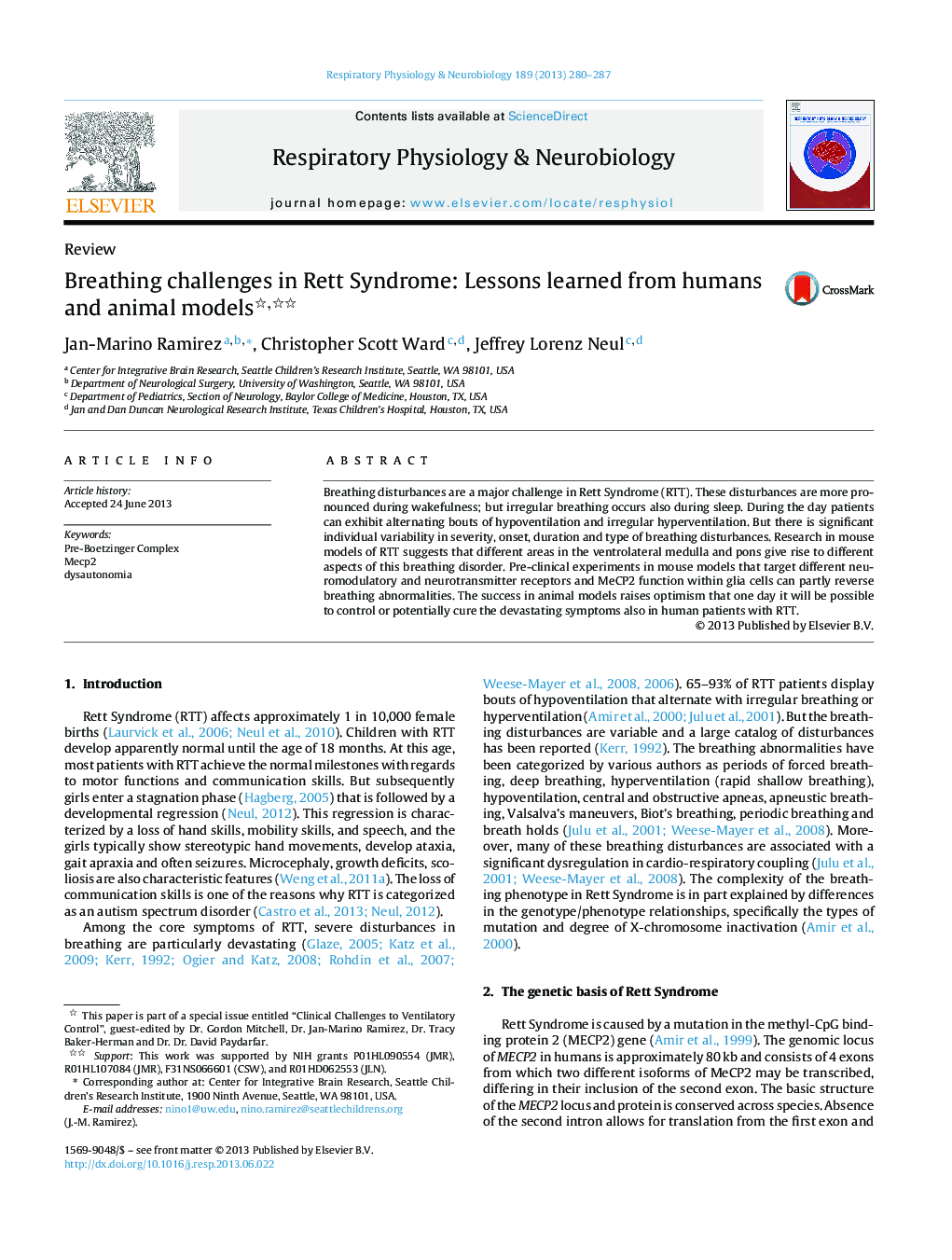| Article ID | Journal | Published Year | Pages | File Type |
|---|---|---|---|---|
| 5925992 | Respiratory Physiology & Neurobiology | 2013 | 8 Pages |
Abstract
Breathing disturbances are a major challenge in Rett Syndrome (RTT). These disturbances are more pronounced during wakefulness; but irregular breathing occurs also during sleep. During the day patients can exhibit alternating bouts of hypoventilation and irregular hyperventilation. But there is significant individual variability in severity, onset, duration and type of breathing disturbances. Research in mouse models of RTT suggests that different areas in the ventrolateral medulla and pons give rise to different aspects of this breathing disorder. Pre-clinical experiments in mouse models that target different neuromodulatory and neurotransmitter receptors and MeCP2 function within glia cells can partly reverse breathing abnormalities. The success in animal models raises optimism that one day it will be possible to control or potentially cure the devastating symptoms also in human patients with RTT.
Keywords
Related Topics
Life Sciences
Biochemistry, Genetics and Molecular Biology
Physiology
Authors
Jan-Marino Ramirez, Christopher Scott Ward, Jeffrey Lorenz Neul,
